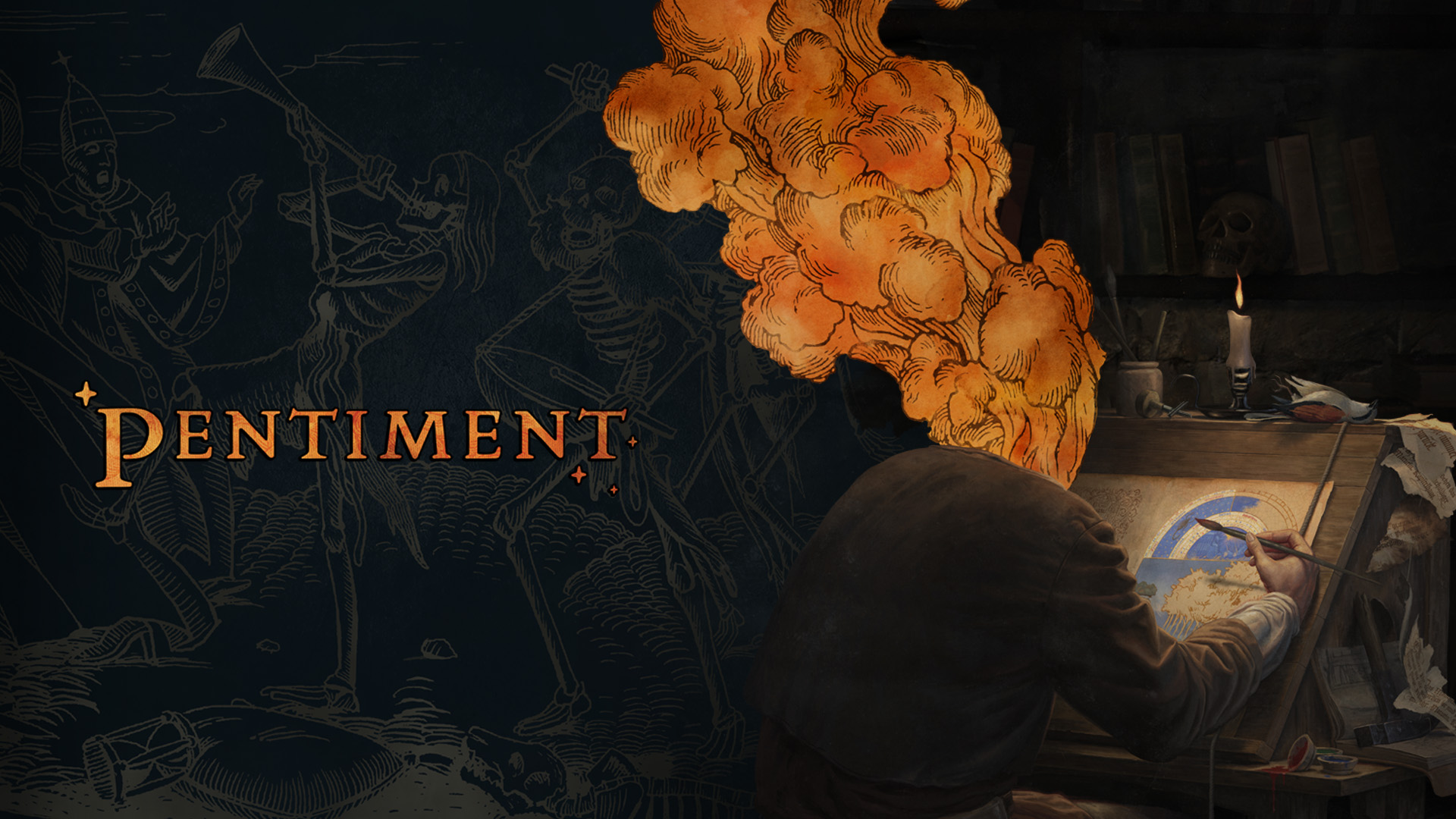When I first decided to start this website, I knew the first piece of media I wanted to review was Pentiment. Every once in a while, I’ll find a game that strikes me so profoundly that I could spend hours discussing its’ themes and narrative – though I doubt anyone would want to listen to me ramble about a game for that long, so I’ll keep this review as concise as possible!
To set the scene, Pentiment is an adventure game set in the fictional Bavarian village of Tassing, sometime in the early-mid 16th century. You are placed in the shoes of Andreas Maler, an artist whose burgeoning career begins as an illuminator at the local abbey. I’ll do my best to keep this spoiler free, but soon enough, the abbey – and Tassing as a whole – is thrown into chaos when someone is murdered, and Andreas sets off to find the culprit.
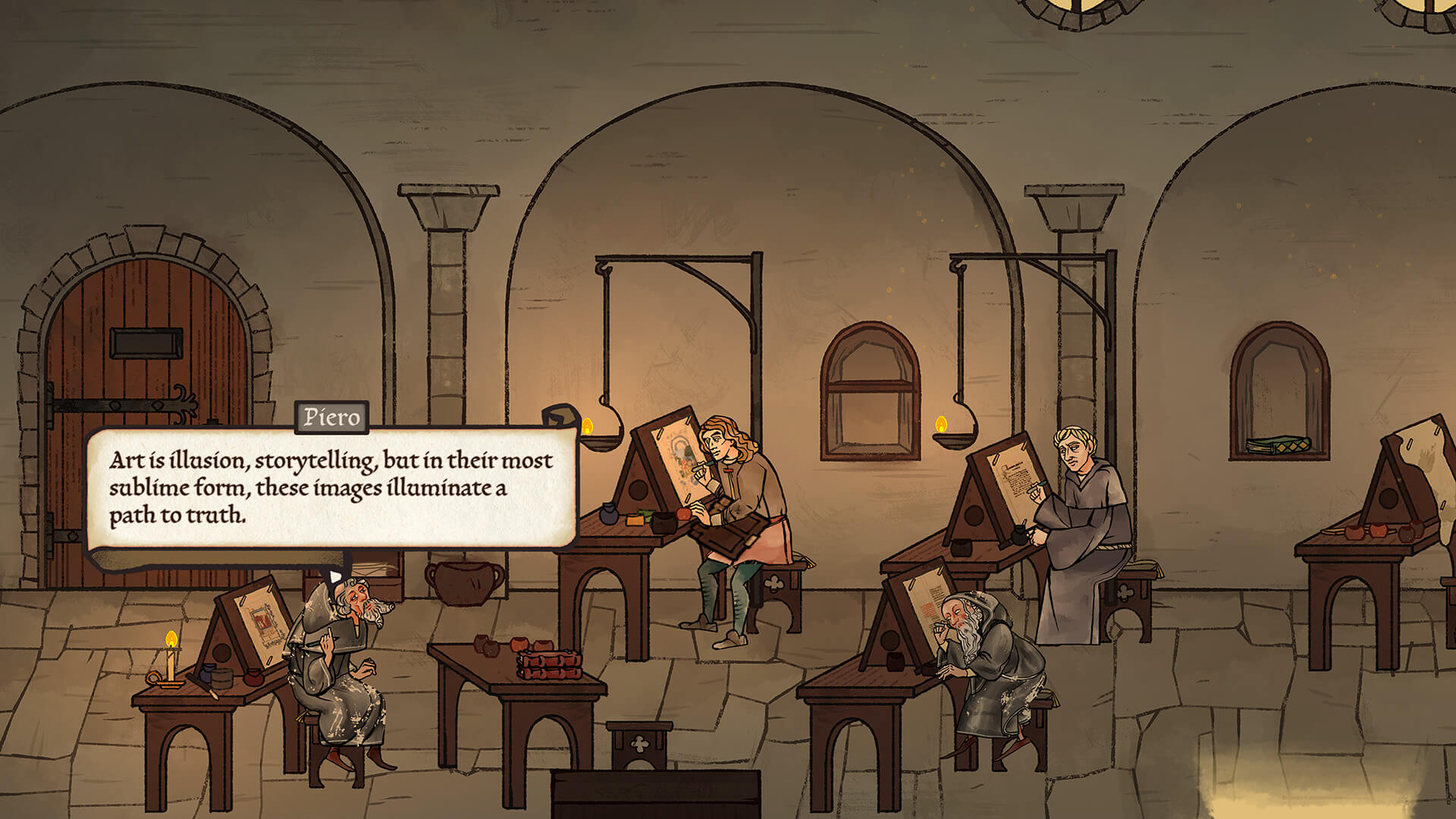
So far, this sounds like a traditional setup for your average murder mystery, but Pentiment is anything but an average adventure. As Andreas, the player is given a multitude of leads and potential suspects they must investigate, and only have a few days to get to the bottom of the mystery. Rather intentionally, Pentiment does not give the player enough time to investigate every lead and question every suspect. Instead, the player must gather as much information as they can within the limited time frame to put together a persuasive argument for who murdered the victim, and why.
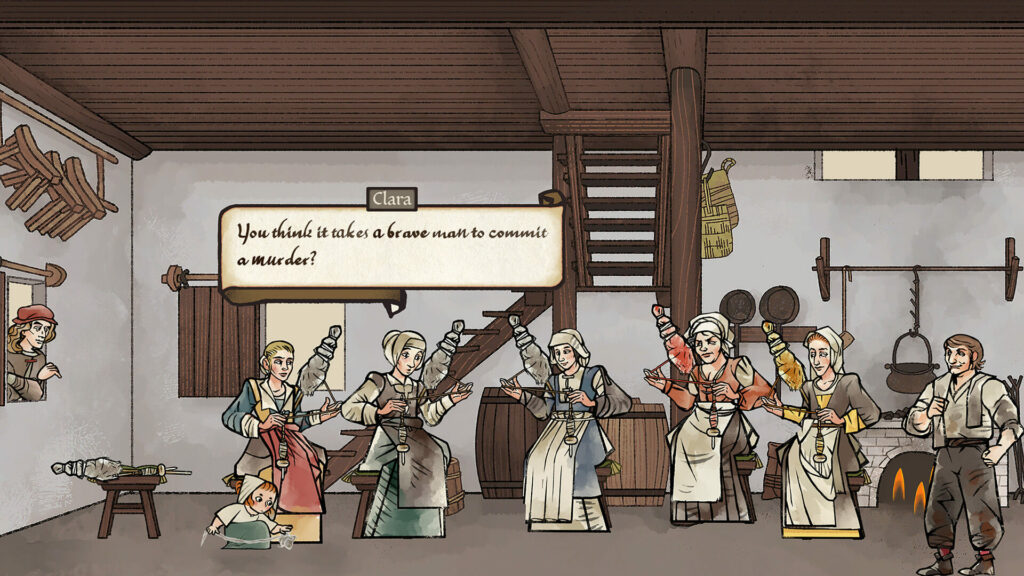
Rarely has a murder mystery game stressed me out as much as Pentiment. When it came time for me to reveal the findings of my murder investigation, I was largely uncertain as to who the culprit actually was. I had gathered a good deal of information about a number of the suspects, but the pieces were not fitting together perfectly. Even the most obvious of suspects had mitigating factors that made it impossible to decide with certainty that they were the murderer. This hesitance came alongside the fact that I was unable to gather any useful information about one of the suspects, leading me to question the morality of possibly condemning an innocent person.
Regardless of your choice of culprit, both Andreas and the residents of Tassing have to live with the consequences. As the game progresses, the town will evolve alongside Andreas – visitors come and go, relationships are formed, and villagers ultimately die, many of these changes the direct or indirect results of the player’s decision. These changes are not solely caused by obvious decisions, such as who the player accuses of being a murderer – innocuous decisions such as picking out a gift for a friend or advising a child on religious pursuits can drastically alter the future of Tassing. Pentiment is not strictly a game about solving murders – it’s a game about the consequence of choice.
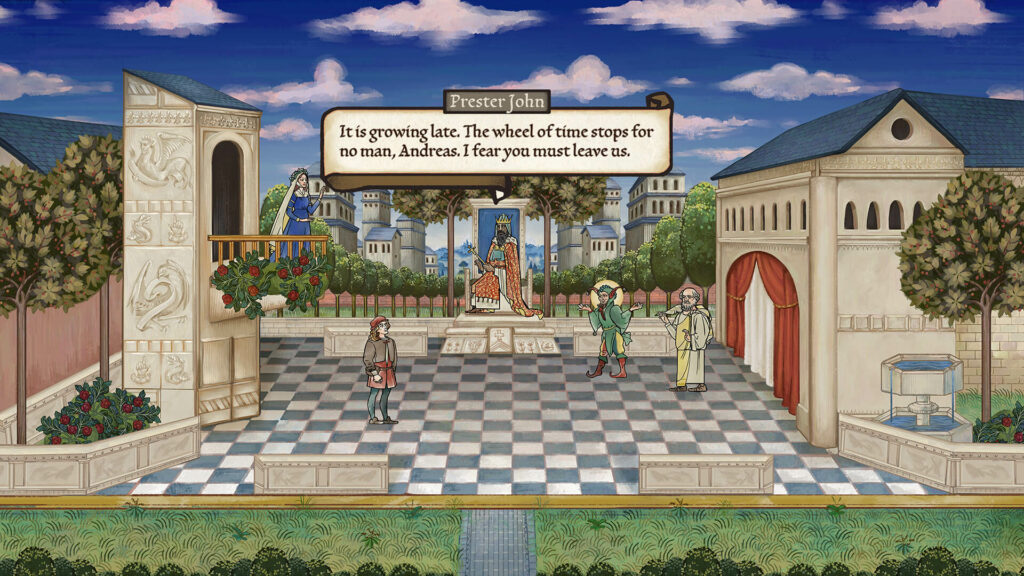
The story Pentiment tells takes place across 25 years, with the player jumping in at various points in time throughout Tassing’s history. The decision to employ time-skips empowers Pentiment’s resounding themes, as the player gets to witness how some of the trite decisions Andreas made at the beginning of his adventure have affected Tassing decades later. While many of these decisions hit the mark, the third act of the game feels like a bit of a slog compared to the rest of the adventure. While this may have been an intentional decision on the developer’s part, I found myself exploring Tassing a lot less in the third act, instead powering through the tedious early parts of the act to see how the town’s web of conspiracies unravels.
The developers clearly drew deep inspiration from both 16th-century block prints and illuminated manuscripts to create a striking art style that separates Pentiment from its peers in the murder mystery genre. Animations have a hand-drawn quality to them that only further adds to the imagery of a medieval manuscript in the making. Though the game has no voice acting, each character is given a unique voice through the hand-written nature of the game’s dialogue. Peasants write in a scraggly script, often rife with spelling errors, while the older priests of Tassing’s abbey write in a traditional gothic font. These fonts represent how Andreas – and the player – perceives the literacy and education of Tassing’s residents. As an example, Andreas meets a character early on who seems to have the standard education of a nobleman, but when Andreas and the player both learn that the nobleman has read many of the same texts Andreas has, the game literally erases the nobleman’s previous font and replaces it with Andreas’ font, as the artist now sees the man as a peer.
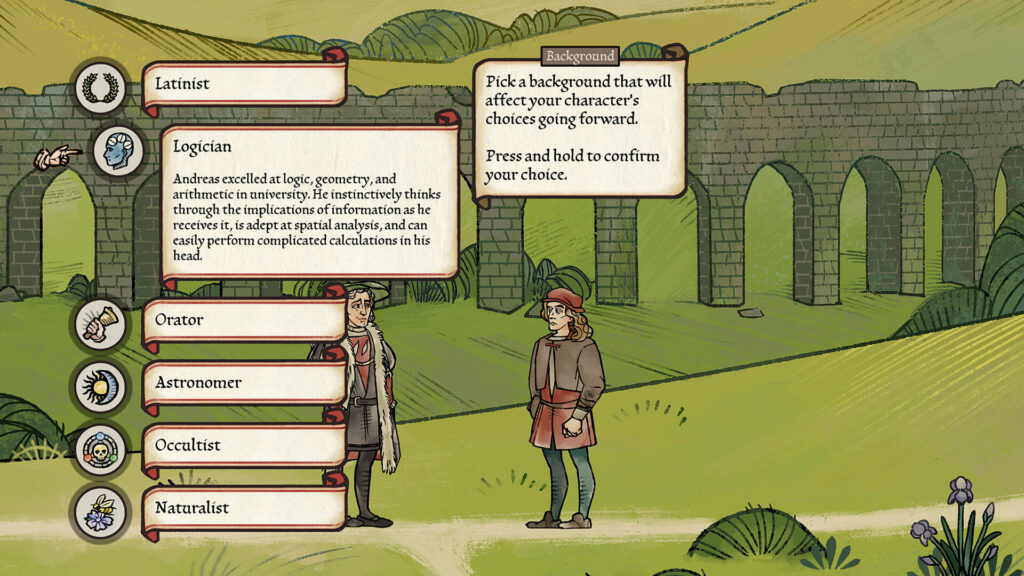
Despite being a text-based adventure game with minimal player interaction, Pentiment offers a surprising amount of replay value, largely from two main factors, the first being that, as previously mentioned, Andreas is unable to explore every lead in the murder before the deadline approaches. Additionally, when the game begins, the player is given opportunities to choose a multitude of factors in Andreas’ background, including his education, personal hobbies, and language proficiencies. These choices affect how Andreas interacts with the game’s cast and shift his comprehension of clues and story leads. On repeat playthroughs, the player can certainly experiment with a new background for their favorite artist while attempting to find clues they missed on their first run.
Overall, Pentiment is as near-perfect as a murder mystery can get. The game’s unique style and inspirations are more than enough to garner interest, and fans of mysteries and medieval history alike will find much to enjoy in this adventure’s story and setting. While much of the journey is expertly paced, Pentiment approaches tedium in the third act, though the conclusion’s slower pace shouldn’t stop players from enjoying this excellent medieval mystery.

